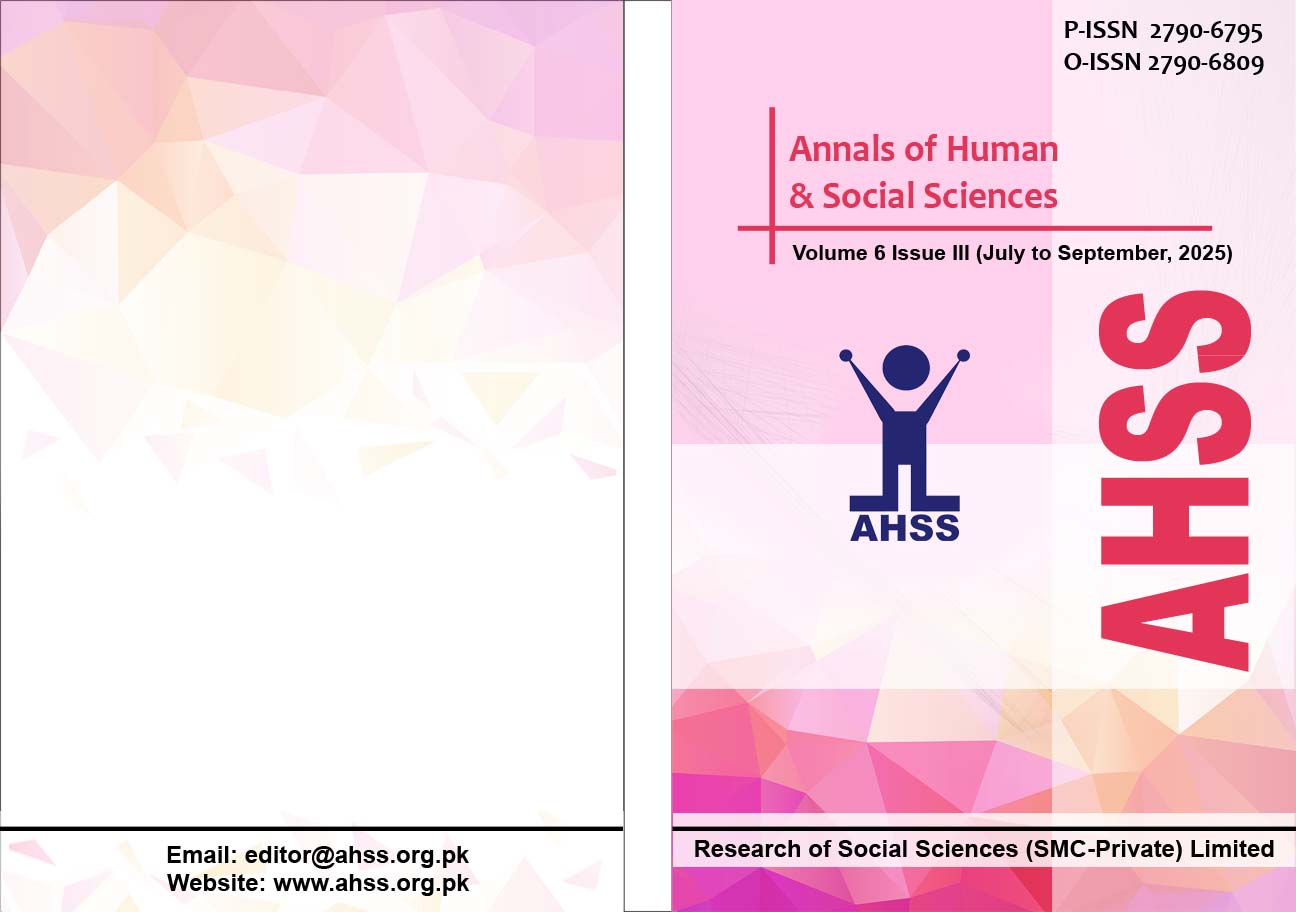An Ecocritical Study of Apocalyptic Landscape in Wu’s The Man with the Compound Eyes
DOI:
https://doi.org/10.35484/ahss.2025(6-III)58Keywords:
Environmental Degradation, Island Ecology, Ecocriticism, Pollution, Apocalypse, Animal, Wilderness, EarthAbstract
This study investigates the environmental issues and their impact on the main characters depicted in The Man with the Compound Eyes by Wu Ming-Yi (2013). The research examines that all living things are interdependent within ecosystems. The aim is to represent more general ecological issues, including pollution, climatic disruption, and ecological crisis. In the last few decades, human activities have been significantly influencing the global earth ecosystem, commonly characterized as environmental degradation. Among these impacts, pollution, climate change and rising sea levels pose a severe threat to all living creatures and have the biggest impact on the environment. The research applies Greg Garrard’s (2004) ecocritical theory to analyze the portrayal of environmental consciousness, the social disparities caused by environmental damage, and its cultural significance in a global context. Additionally, psychoterratic theory is used to analyze the character’s response to apocalyptic landscape, focusing on concepts such as eco-anxiety and solastalgia. In solastalgia syndrome main characters worry about the current environmental disaster. The qualitative textual analysis is adopted to explore the techno-ecocritical crisis in the present research. The text juxtaposes two kinds of disasters, including natural and man-made disasters. The findings reveal that the selected text transcends the conventional tale of vulnerability, resilience, and displacement amidst the aftermath of ecological devastation. The post-apocalyptic narrative manifests anxiety about environmental catastrophe, which reflects cultural fear and anthropocentric devastation. The text foregrounds a dynamic mediation on human-ocean entanglement, contrasting pre-modern ecological harmony with ruptures of contemporary environmental crises. This research subverts anthropocentric paradigms, urging a reimagined ethical engagement with the non-human world. The findings of this study contribute to a deeper understanding that environmental literature addresses urgent ecological concerns and promotes environmentally sustainable practices and behaviors, particularly in Taiwanese society.
Downloads
Published
Details
-
Abstract Views: 87
PDF Downloads: 167
How to Cite
Issue
Section
License
Copyright (c) 2025 Annals of Human and Social Sciences

This work is licensed under a Creative Commons Attribution-NonCommercial 4.0 International License.

RESEARCH OF SOCIAL SCIENCES (SMC-PRIVATE) LIMITED(ROSS) & Annals of Human and Social Sciences (AHSS) adheres to Creative Commons Attribution-Non Commercial 4.0 International License. The authors submitting and publishing in AHSS agree to the copyright policy under creative common license 4.0 (Attribution-Non Commercial 4.0 International license). Under this license, the authors published in AHSS retain the copyright including publishing rights of their scholarly work and agree to let others remix, tweak, and build upon their work non-commercially. All other authors using the content of AHSS are required to cite author(s) and publisher in their work. Therefore, RESEARCH OF SOCIAL SCIENCES (SMC-PRIVATE) LIMITED(ROSS) & Annals of Human and Social Sciences (AHSS) follow an Open Access Policy for copyright and licensing.






